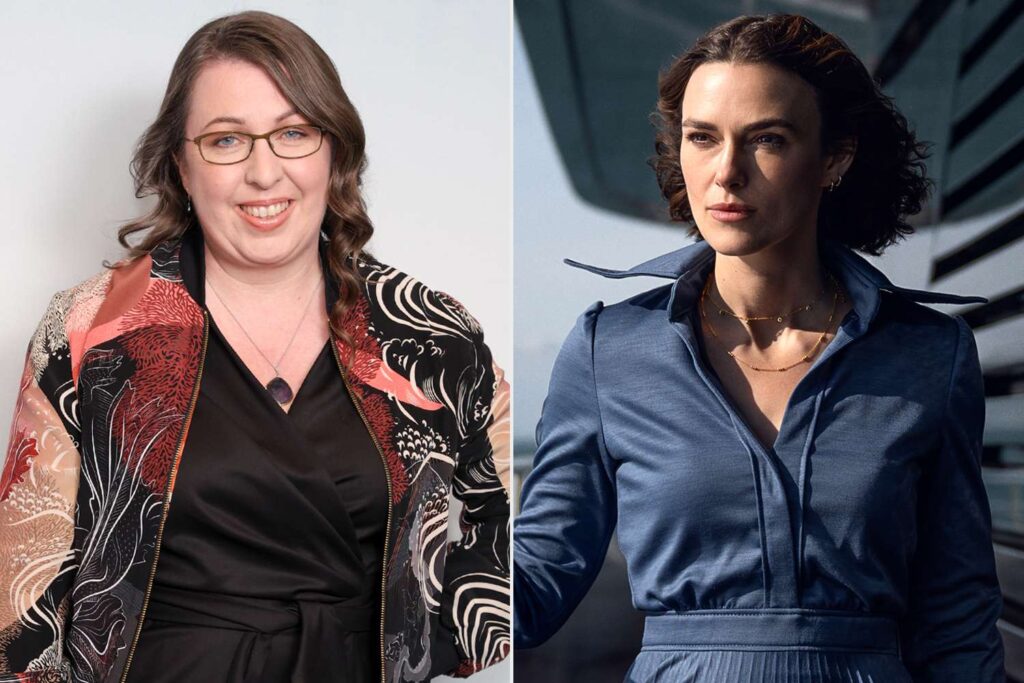NEED TO KNOW
Ruth Ware may have penned the material behind Netflix’s The Woman in Cabin 10, but the movie veered into a vastly different direction from the 2016 novel — and the author isn’t mad about it.
“I think it was right to go a different direction,” Ware, 48, tells PEOPLE. “The twists and turns in the book would’ve been impossible to pull off onscreen.”
The Woman in Cabin 10, released on Netflix on Oct. 10, stars Keira Knightley as Lo Blacklock, a journalist who is invited to a mysterious yacht trip hosted by a suspicious billionaire, Richard Bullmer (Guy Pearce). When she witnesses a woman being thrown overboard, she raises her concerns — only to be gaslit into thinking the woman never existed.
Though the movie sticks close to the book plot to start, it begins to go rogue in the end — largely because of the novel’s use of Lo’s first-person narration and internal monologue.
“A book is a lot baggier, it’s a lot bigger than a 90-minute film,” Ware explains. “And obviously, from a kind of technical point of view, in the book, we’re completely inside Lo’s perspective. It’s a first-person book, so we never know what’s going on outside of what Lo can see and tell us.”
Lia Toby/Variety via Getty
Meanwhile, the movie is “obviously completely different.” Ware says that because it’s more visual, more details had to be shown on-screen, outside of just what Lo is perceiving.
At the end of the day, though, the final product captured the essence of what the book is about: the fear of not being believed.
“It really captured the heart of the book, the terror, the all-too-relatable terror of being a woman who has seen something, has had something happen to them, has told the truth about it and has not been believed because of who or what they are or what they said,” she explains.
“And that is a fear that I have experienced and was certainly uppermost in my mind when I wrote the book,” the author continues. “And unfortunately, I think it’s still a reality 10 years on, and I thought they did an amazing job of conveying that on screen.”
Parisa Taghizadeh/Netflix© 2025
One significant change was the focus on Lo’s mental health. In the book, she’s portrayed as someone suffering from post-traumatic stress disorder and on anxiety medication, both of which are used to discredit her and paint her as unwell.
In the movie, however, director Simon Stone decided to remove those elements, feeling that it fed into a “very male-led narrative, which is if a woman has a reason not to be believed, let’s go for that.”
“Often in court cases where women are accusing a man of something untoward, there’ll be a lot of discussion about what she consumed, what her mental health history is, what her sexual history is, et cetera, and it’s all on the woman to prove that she’s actually someone with integrity,” he explains. “Men don’t have to prove their integrity like that. And so I kind of wanted to delete that question. You can make it up in your own mind, if you want to.”
Another major plot change — that Ware calls “brilliant” — was the entire ending of the film. Instead of hearing that Bullmer, who the audience find out was the culprit all along, faces consequences off-screen, the movie kills him in the climax. And Lo gets away scott-free.
Gallery/Scout Press
“In the book we’re totally in her experience, below deck, living her nightmare. And one of the side effects of that is that she never gets her moment of kind of showdown with Bullmer,” Ware says. “She never gets to see that moment of restorative justice.”
But in the movie, Lo is the one to shoot him dead.
“I was really happy that they were able to give Lo that kind of moment,” Ware says. “I was like, ‘Yes, dammit, you do deserve closure.'”
Never miss a story — sign up for PEOPLE’s free daily newsletter to stay up-to-date on the best of what PEOPLE has to offer, from juicy celebrity news to compelling human interest stories.
This is Ware’s first adaptation — and the experience certainly has made her eager for more. Regardless of the changes, the author couldn’t be more thrilled with the outcome.
“Writers, we spend a lot of time sitting in our spare rooms, typing away on our computers, trying to listen to these sometimes very quiet voices in our heads, and try and figure out who these people are and what they’re trying to tell us,” she says.
“So to go from that to watching these characters I dreamt up 10 years ago, walking around in front of me, saying lines that I wrote in my spare room on a whim, was just … Yeah, it was incredibly, incredibly surreal but also amazing. It felt like a superpower.”
The Woman in Cabin 10 is streaming on Netflix.

